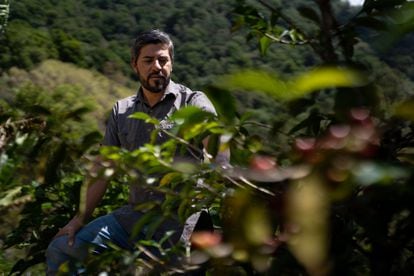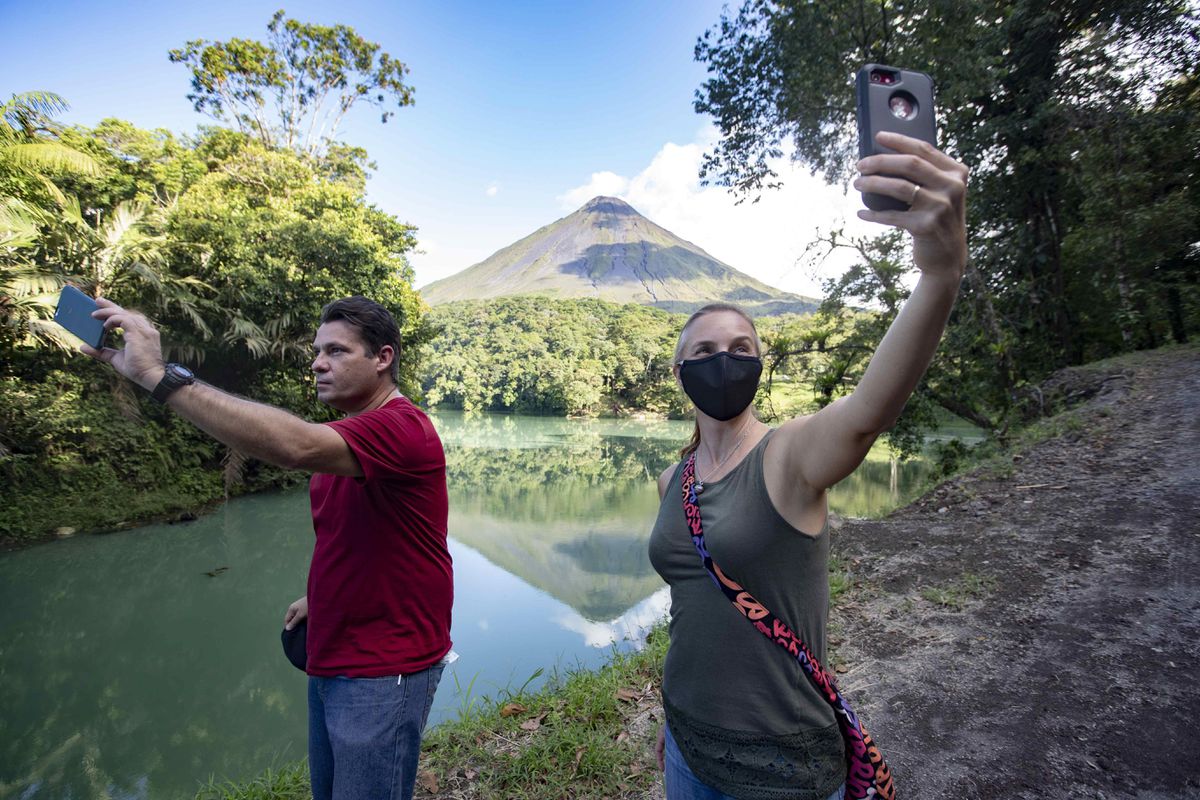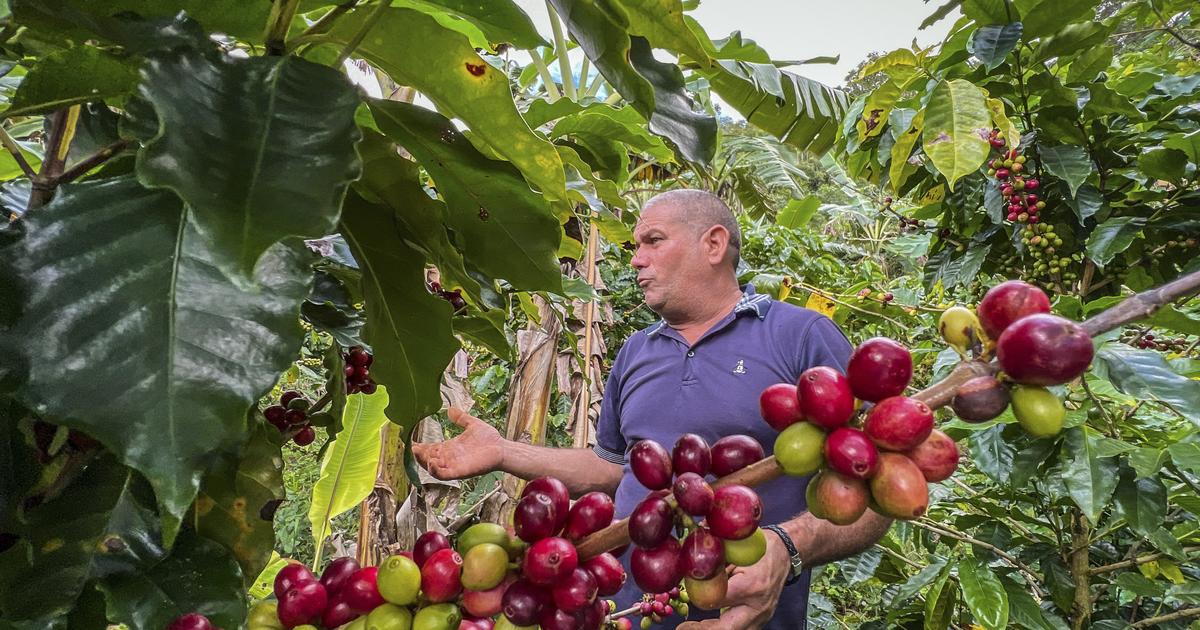EL PAÍS offers the América Futura section open for its daily and global informative contribution on sustainable development.
If you want to support our journalism, subscribe
here
.
In the shade of an oak tree, two butterflies and a hummingbird hover over the branches of the coffee bushes that still show some red berries that have fallen behind the harvest season.
A cool breeze moves the branches of the trees and accompanies the sounds of the icy current of the Savegre River, the chirping of birds and the snoring of a crushing machine that works with solar energy and recycles water.
Next to it, batches of grains are dried with natural heat and exhale a strong smell of syrup.
The micro-mill, a small-scale processing plant, is barely noticeable amid the green of the mountain landscape next to the enormous cloud forest in the Cordillera de Talamanca, between the Central Valley of Costa Rica and the southern zone of the renowned Central American country. by its nature as the quality of its coffee.
And this is still a dilemma.
“We don't want this to be a coffee plantation;
the dream is that this becomes a forest with coffee”, warns Jonathan Cerdas, one of the partners of the micro-beneficiation and of the organic plantation that operates in an old traditional farm.
They are the motors of a project that mixes rural tourism, volunteering and community education to gradually influence the reduction of the environmental impact of the most coffee-producing area of Costa Rica, with 40% of the national total.
The region is called 'Los Santos', it produces high altitude grain and the photo of its mountains also shows brown patches as evidence of traditional crops to the detriment of the forest.
The little town is called Providencia, in the Dota municipality, with about 250 inhabitants next to the most awarded farms for the quality of their coffee, where no one thought that the quixotic project of Jonathan and his partner,
Jonathan Cerdas among coffee bushes at Finca La Bio Fábrica.Carlos Herrera
His
Green Communities
brand, labeled "organic coffee," won four categories of the 2022 World Coffee Challenge in September for quality in the cup, but that's not the most important thing, he warns.
The most important thing for them is to demonstrate that organic and forest-friendly production can provide a production equal to or better than that which damages nature or kills the soil with agrochemicals, even with the high sustainability averages that Costa Rica offers in relation to other producing countries.
The country of environmental fame is listed as the largest consumer of pesticides per hectare in the world and the well-reputed coffee is part of it.
“The environmental problem exists and it is serious, although there are other countries where the destruction of forests is worse.
That is why we want to show producers that they can change their methods and still obtain high-quality coffee, with the advantage that it has a larger market because there are consumers who value this.
We want to grow to influence to stop environmental damage, not to become a Starbucks”, explains Cerdas, before detailing the coffee processing.
He talks about love for work, refers to plants as people ("she eats well," he says about plants) and uses affectionate diminutives to talk about the fungi that grow in some of the seven tanks where organic substances are stored.
With their own farm, there are 17 organic grain producers who bring their bags to this micro-mill and 70 families who receive some direct income.
"Since we won the award, several have switched their production to 100% organic," Carlos proudly adds, aware of the conservative weight in the coffee world and, therefore, in a region whose economy and state of mind depend on the harvests.
Coffee also ends up being a language and both partners reason about the value it has to talk about environmental protection.
Carlos Jiménez works in the microbeneficio.Carlos Herrera
"I'm not leaving"
Carlos and Jonathan are 40 years old and are the grandsons of lifelong coffee-growing families, like so many in the Los Santos area.
The first had migrated to the United States to earn some money and invested it again.
They speak English, they know about tasting and barista, they investigate, take risks and mix goals such as reaching 30,000 plants in 2025 and turning their farm into a small forest corridor.
They are far from
hippies
and they define themselves as entrepreneurs.
They met at university studying tourism and a course project was the seed of all this.
First they thought about rural tourism, then they started working with volunteers and organic farming.
From there they embraced the idea of a university to develop microbeneficiation and now do all of the above supported by the coffee brand and the success in their first international competition, but without losing the original focus: demonstrating that it can be produced without passing the bill to the environment.
Diego Sáenz also works with them. He was about to leave Providencia for the city to support his family and now he even has his land where he produces with the methods he has learned here.
"I'm not leaving anymore," he says without stopping to manipulate the crushing machine that they imported from Colombia.
Others in town or in the area view them with skepticism.
The Costa Rican Coffee Institute (ICAFE) also distrusts production without agrochemicals due to the threat of pests such as rust, but they recognize that there is a market for it and accept that there may be high-quality fruits as well.
The initiatives often go hand in hand with a
millennial
energy that could help restore enthusiasm for agriculture in new generations, an activity that young people have fled in recent decades.
Coffee plantation at Finca La Bio Fábrica.Carlos Herrera
A worker at the mill. Carlos Herrera
Coffee drying beds in a greenhouse.Carlos Herrera
Jonathan Cerdas in the project cafeteria. Carlos Herrera
“We have great advantages as a country due to the climate, the terrain, the environmental component and the benefit sharing model, but there are young people and small producers refining those advantages, in love with what they do.
This captivates certain markets and stimulates more”, admits Xinia Chaves, who was president of ICAFE until December.
He admits that less than 5% of the production is directed towards specialty coffees or special processes, but the trend is growing and there are buyers willing to pay prices above $700 per quintal (the average international reference price in 2023 is $166 the quintal).
This encourages more innovators of an iconic coffee industry in Costa Rica, which in 2020 celebrated 200 years since its first export and which built its National Theater, at the end of the 19th century, with a special tax on coffee.
It is not a power in volume (it contributed 0.88% of the grain in the world in 2022, in position 13), but over time it has gained fame for its high quality, in addition to other factors such as relative sustainability and the laws that guarantee that 82% of the foreign currency from exports remains with the producers.
Coffee represents only 0.14% of the national GDP or 4.64% of agricultural production, but its social impact is high, with 26,700 families working its coffee plantations.
In addition, most collectors have health insurance for this activity and there are programs to eradicate child labor.
Jonathan and Carlos, however, see in their region that coffee production continues to carry environmental sins, especially due to the abundance of agrochemicals that affect the soil and rivers, but also occasionally due to deforestation.
"Sometimes you see a forest fire and then you see a coffee plantation there. What a coincidence!" says Jonathan before accepting that not everyone among Dota coffee growers smiles at him, although the September prize has improved the press.
Little by little, the idea that there may be some magic in a grain produced near other species, in a healthy soil fed by other fruits and nourished by the feces of wild animals that roam around, is accepted.
They sell the idea that coffee can be worked as part of the ecosystem and not as its competitor,
Panoramic view of one of the farm's cabins. Carlos Herrera
Seated at the table in their new cafeteria built next to the bungalows of the project, Carlos and Jonathan serve the coffee and explain the properties and flavor nuances of the drink with taster details.
And they come back with the theme of the richness of the natural soil and with the value of the special process with minimal impact on the environment, but wanting to make it clear that their main product is not coffee, but to proclaim with the evidence that a friendly production with nature can be as competitive and profitable as the traditional one, insists Jonathan: "Otherwise, all this is going to make very little sense."




/cloudfront-eu-central-1.images.arcpublishing.com/prisa/5OEFXRUP6BFYRM3645I2WOWNVQ.jpg)

/cloudfront-eu-central-1.images.arcpublishing.com/prisa/T7IWWQIQZZHJZCRUMJSKJLCNSY.jpg)
/cloudfront-eu-central-1.images.arcpublishing.com/prisa/HLK7GOESWRBMZA2KE2VATJISN4.jpg)

